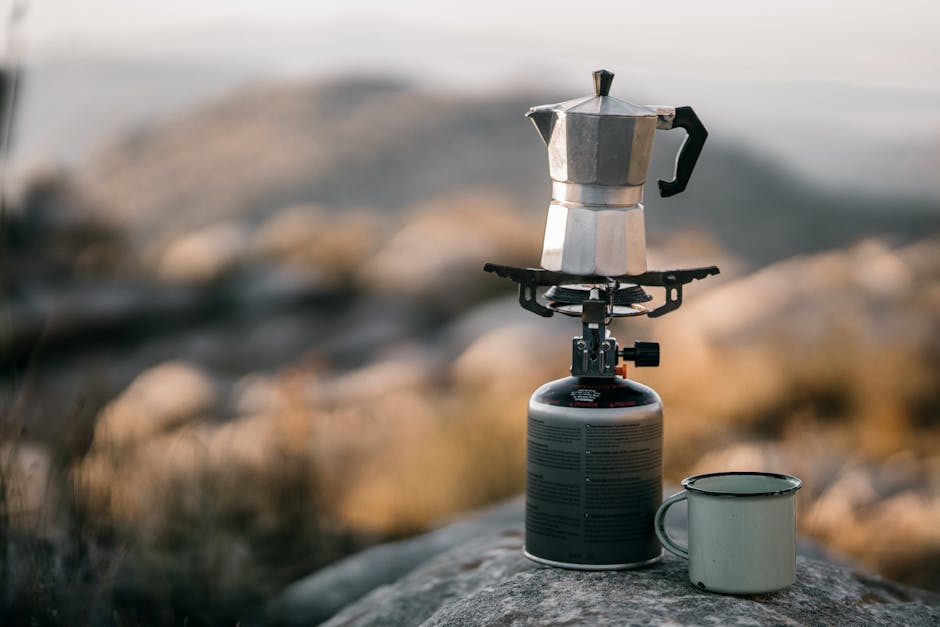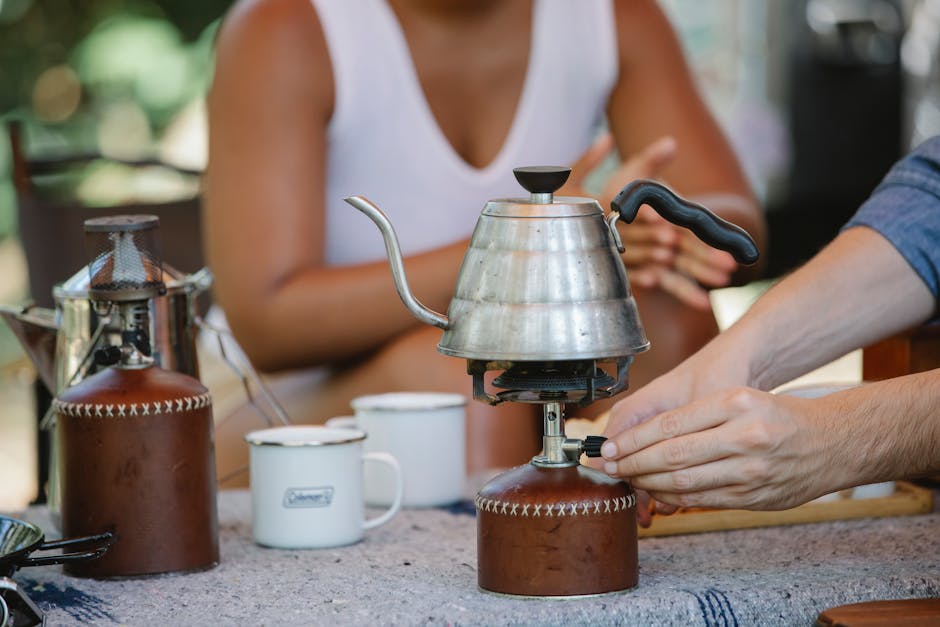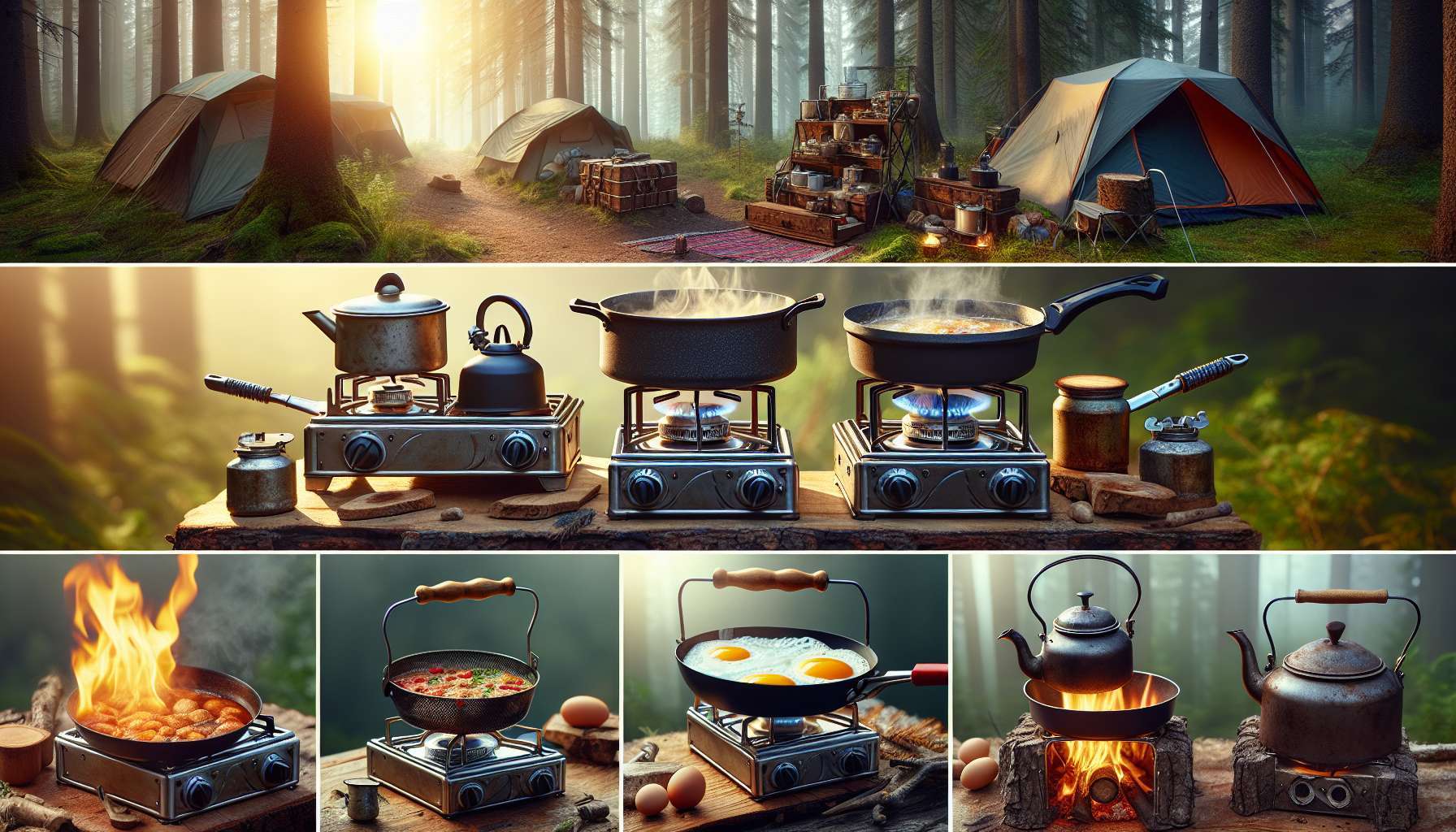Camping Stoves: The Ultimate Guide to Outdoor Cooking
When it comes to outdoor adventures, camping is one of the most popular activities that allows us to connect with nature, unwind from the hustle and bustle of daily life, and create lasting memories with friends and family. And what better way to enjoy a meal in the great outdoors than with a trusty camping stove by your side? In this comprehensive guide, we’ll delve into the world of camping stoves, exploring their history, types, benefits, and everything you need to know to choose the perfect one for your next outdoor excursion.
The Evolution of Camping Stoves
Camping stoves have come a long way since their humble beginnings. In the early days, campers relied on open fires for cooking, which posed several challenges such as limited control over heat intensity, longer cooking times, and environmental concerns. The need for a more efficient and portable cooking solution gave rise to the development of the first camping stoves.
One of the earliest known camping stoves was the Primus stove, invented in 1892 by Swedish inventor Frans Wilhelm Lindqvist. The Primus stove revolutionized outdoor cooking by using pressurized fuel to produce a consistent flame, making it easier to prepare meals in the wilderness. Over the years, camping stoves have evolved to become more compact, lightweight, and fuel-efficient, catering to the diverse needs of outdoor enthusiasts.
Types of Camping Stoves
Today, there is a wide range of camping stoves available on the market, each designed for specific purposes and preferences. Here are some popular types of camping stoves:
1. Propane Stoves
Propane stoves are a popular choice among campers due to their convenience and ease of use. These stoves use propane gas canisters as fuel, providing a reliable heat source for cooking. Propane stoves come in various sizes and configurations, from compact single-burner stoves to larger models with multiple burners, making them versatile for different camping needs.

2. Liquid Fuel Stoves
Liquid fuel stoves, such as white gas stoves, are known for their high heat output and performance in extreme weather conditions. These stoves use liquid fuels like white gas, kerosene, or unleaded gasoline, making them a popular choice for backpackers and mountaineers who require a reliable cooking system in harsh environments.

3. Canister Stoves
Canister stoves are compact and lightweight cooking systems that use screw-on gas canisters for fuel. These stoves are easy to set up and operate, making them ideal for camping trips where portability is key. Canister stoves are available in a variety of designs, including integrated systems with built-in pots and wind shields for efficient cooking.

4. Wood Burning Stoves
Wood burning stoves offer a sustainable and eco-friendly cooking solution for campers who prefer to use natural resources for fuel. These stoves utilize twigs, pine cones, and other biomass materials to create a flame, eliminating the need for traditional fuels like gas or liquid. Wood burning stoves are especially popular among minimalist campers and survivalists who value self-sufficiency in the wilderness.

Benefits of Camping Stoves
Using a camping stove for outdoor cooking offers a myriad of benefits that enhance the camping experience. Here are some key advantages of using a camping stove:
1. Convenience
Camping stoves provide a convenient and efficient way to prepare meals while camping, eliminating the need to build and tend to a fire. With a camping stove, you can cook your favorite dishes quickly and easily, allowing you to spend more time enjoying the outdoors.
2. Control
Camping stoves offer precise control over heat intensity, allowing you to adjust the flame to suit different cooking methods. Whether you’re simmering a sauce, boiling water, or frying food, a camping stove gives you the flexibility to cook with precision and consistency.
3. Portability
Most camping stoves are designed to be compact and lightweight, making them easy to transport and set up at your campsite. Whether you’re car camping, backpacking, or hiking, a portable camping stove is a convenient cooking solution that doesn’t weigh you down.
4. Safety
Camping stoves are equipped with safety features such as built-in wind shields, flame control valves, and stable bases to ensure safe and efficient cooking in outdoor settings. By using a camping stove, you can minimize the risks associated with open fires and reduce the likelihood of accidents while cooking.
Choosing the Right Camping Stove
When it comes to selecting a camping stove, there are several factors to consider to ensure you choose the right one for your needs. Here are some key considerations to keep in mind when shopping for a camping stove:
1. Fuel Type
Consider the type of fuel that the camping stove uses, as different fuel types offer varying benefits and limitations. Propane stoves are convenient and easy to use, while liquid fuel stoves provide high heat output in extreme conditions. Choose a fuel type that suits your camping style and cooking preferences.
2. Cooking Capacity
Determine how many people you’ll be cooking for and the types of meals you plan to prepare while camping. If you’re camping solo or with a partner, a compact single-burner stove may suffice. However, if you’re cooking for a larger group, opt for a stove with multiple burners and a larger cooking surface.
3. Weight and Portability
Consider the weight and portability of the camping stove, especially if you’ll be carrying it on backpacking or hiking trips. Choose a lightweight and compact stove that fits easily in your pack and is easy to set up at your campsite.
4. Durability and Reliability
Look for a camping stove that is built to withstand outdoor conditions and frequent use. Choose a stove made from durable materials like stainless steel or aluminum, with reliable components that can withstand the rigors of camping adventures.
Expert Opinions
We spoke to outdoor enthusiast and camping expert, Sarah Thompson, to get her insights on the importance of choosing the right camping stove for outdoor adventures. According to Sarah, “Having a reliable camping stove is essential for enjoying a stress-free camping experience. Whether you’re cooking simple meals or gourmet dishes, a good camping stove can make all the difference in how enjoyable your outdoor cooking experience is.”
Common Misconceptions
One common misconception about camping stoves is that they are difficult to operate or require specialized knowledge to use. In reality, most camping stoves are designed for easy setup and operation, with user-friendly features that make them accessible to campers of all experience levels.
Comparative Analysis
When comparing different types of camping stoves, it’s essential to weigh the pros and cons of each to determine which one best suits your needs. Consider factors such as fuel efficiency, cooking performance, ease of use, and cost to make an informed decision about which camping stove is right for you.
FAQs
1. Are camping stoves safe to use in all outdoor environments?
Most camping stoves are designed to be safe for use in outdoor settings, but it’s essential to follow manufacturer instructions and exercise caution when operating a camping stove.
2. Can I use my camping stove indoors?
Camping stoves should never be used indoors due to the risk of carbon monoxide poisoning and fire hazards. Always use a camping stove in a well-ventilated outdoor area.
To Wrap Things Up
Choosing the right camping stove is a crucial decision that can significantly impact your outdoor cooking experience. Whether you’re a seasoned camper or new to the world of outdoor adventures, investing in a quality camping stove is essential for enjoying delicious meals in the great outdoors. With a wide range of options available, from propane stoves to wood burning stoves, there’s a camping stove to suit every camper’s needs and preferences. So, pack your gear, grab your camping stove, and get ready to embark on a culinary adventure in the wilderness!




